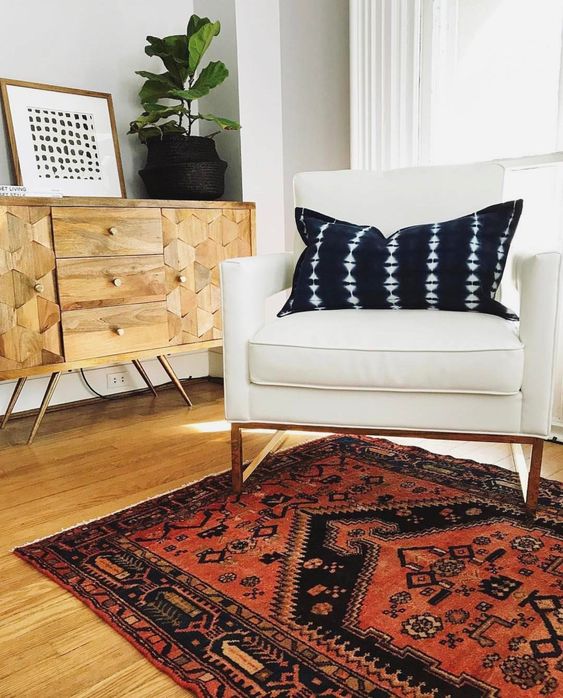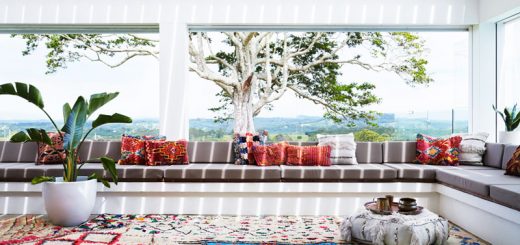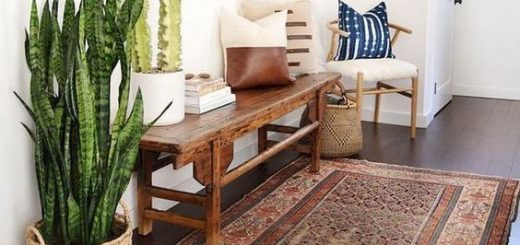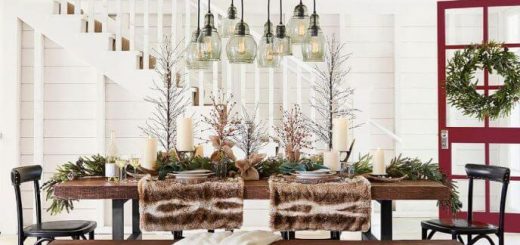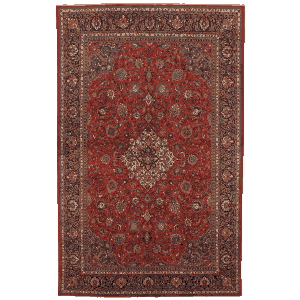How to Decorate With Persian Carpets
Adding a Persian carpet to a room serves as a quick, changeable way of upping the aesthetic value of the space, whether for your own comfort or to catch the eye of potential home buyers. These carpets, made by or inspired by the designs of traditional Iranian weavers, feature deeply saturated colors and intricate motifs such as medallions, spirals, flowers and paisley patterns, among others. Due to a wide range of history-spanning colors and designs, there is no one “right” way to decorate with Persian rugs, but professional retailers and decorators do offer a few helpful tips.
Choosing a Carpet
Pros such as “This Old House” magazine and interior designer Lisa Stewart recommend choosing a carpet first, if possible, and then selecting furniture and decor for the room based on the rug, letting the rug’s palette dictate your later decor choices. In this way, the carpet serves as “foundation” of the room’s style. If you’re unable to purchase a carpet first, try taking a photo of the room with you as you shop. Choose a single, large rug to unify a space or series of thinner runner-style rugs to add a multitude of texture to the room.
Unifying the Space
Traditionally, you’ll want to match your room’s furniture and accessories with the base and accent colors of the rug. This strategy of unifying the room works in contemporary, classic and eclectic spaces – in the latter case, matching the colors of a central rug with the colors of disparate decor elements helps tie the room together. To take the edge off of a contemporary space filled with hard lines – such as those found in modern or older Craftsman-style homes – go with a richly patterned rug. Unify your entire home with a series of similarly colored or patterned carpets, or give each room its own flavor with contrasting rugs throughout the house.
Pairing Tips
While there are no hard and fast rules, Claremont Rug Company president Jan David Winitz offer some helpful pairing hints. Winitz recommends accenting art deco decor with geometric patterns – such as those found on Persian Bakshaish carpets – or pairing undyed camel hair rugs – like those of the Persian Malayer style – with angular spaces. Likewise, highly detailed Persian Laver Kirman rugs complement pastel colors and impressionist artwork while rugs with sparing designs – such as Bakshaish, Herizs and Serapis styles – go well with contemporary spaces.
More Tips
When you’re using your Persian carpet under a dining table, always allow enough space so the chairs stay within the bounds of the rug when pulled out. Complement rooms with a clean, streamlined style by placing Persian rugs right on the edge of a long couch. On a practical level, you can also throw down a Persian carpet to hide flooring flaws, absorb sound or protect new floors.

